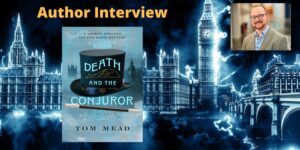You started writing non-fiction, but have now shifted to historical fiction, especially YA. Tell us how that shift came about.
When I started writing, I found it fairly easy to get published in the non-fiction arena. Newspapers, newsletters and magazine are always looking for material for the next issue. It also helped to have a specialty, in my cases birds, which remains a broad and popular subject.
It was only after enrolling in the Whidbey Writers Workshop MFA program of the Northwest Institute of Literary Arts that I gathered up the courage to write fiction. I chose YA because I wanted to write a novel based on the story of my great grandmother as a young pioneer schoolteacher in Snohomish and YA was a good fit. That manuscript is still looking for a publisher.
How differently do you approach writing fiction compared to non-fiction?
I need a huge block of time to get into writing a novel, so I must open my schedule and carve out of big chunk of time. I pretty much shut out the rest of my life and climb into the world of my novel. I visualize my setting and characters, especially their emotions, and there are times when my fictional world feels more real than my normal life.
I can jump in and out of non-fiction more easily and more quickly. And those pieces tend to be shorter.
What are you working on now?
I’m stretching my wings into writing personal essays. And I’ve dusted off a book length non-fiction manuscript called Chasing Tailfeathers about my personal journey into hard core birding, traveling all over the world racking up my life list of birds seen (somewhat like the movie “The Big Year,” if you’ve seen that), and my journey back home to sanity, moderation and finding deep satisfaction in studying the birds on my own island.
As a result, eight years ago I organized an on-going, citizen science project researching the nearly 1,000 seabirds that nest in the bluffs around Whidbey Island. For more about that, go to www.pigeonguillemot.org. Along with that project I’ve drafted a children’s picture book about those seabirds and feel strongly that it’s time for that book to get launched out into the world.
And in a weak moment about six months ago, I committed to painting all the bird species mentioned in my book Brushed by Feathers: A Year of Birdwatching in the West, that’s about 150 birds. It’s a fun project, and I must admit, a distraction from my writing but it’s something my soul needs to do right now. I use watercolor and ink to create bird portraits depicting the individual essence of each species.
And I’m still adding to my 41WhideyPlaces story collection.
Final Words of Wisdom
I’d say—and I believe this could be true for any life, not just a writer’s life—find your passion and keep it alive. For me, between full-time jobs, being married, raising two boys, becoming a single parent, then married again, I’ve been able to keep birding, writing and painting. Recently, along with all the “shoulds” and items on my to-do list, I’ve begun asking myself, “What does my soul need to do today?” And I’ve found the answer boils down to two things, I need time in nature to enrich my soul and time expressing my creativity through writing and art. As long as I pay attention, and make sure those things happen, I manage to get the rest of my life accomplished as well.
Scroll down to read Part I


